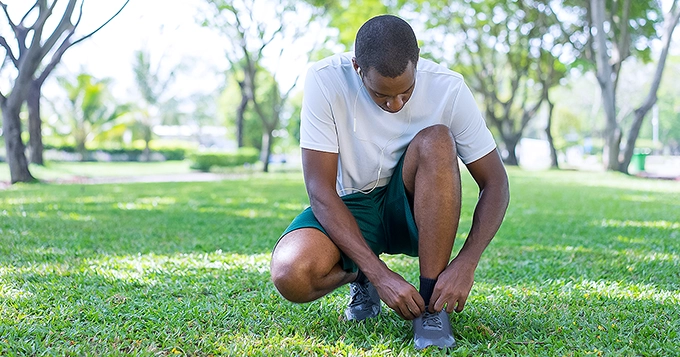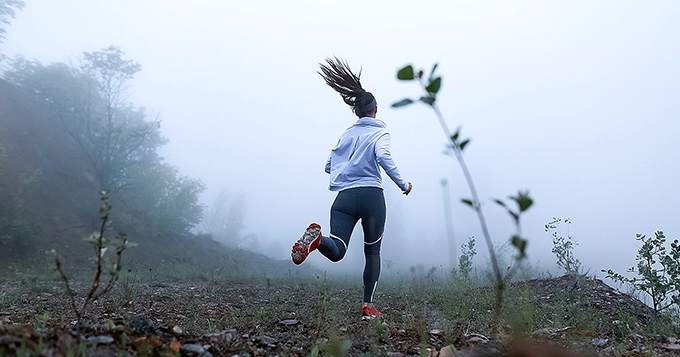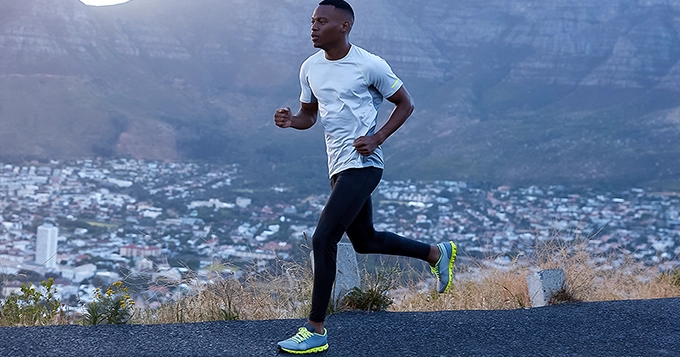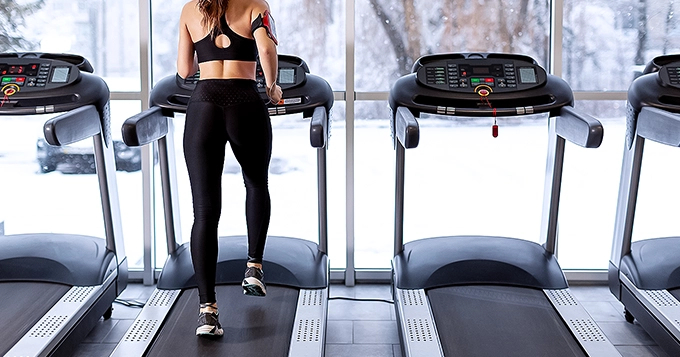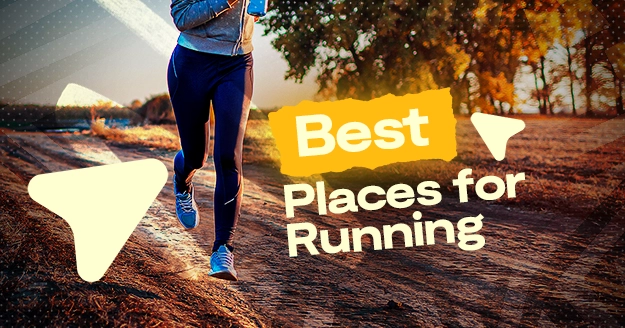Preparing for a run isn’t just about wearing the right outfit and tying your shoelaces. It also involves choosing the right place or surface to run on. This should satisfy your preferences, fitness goals, and fitness level.
In this article, we’ll explore how soil, asphalt, and treadmills differ from each other and which might be the best place to run.
Running on Soil
There are numerous scenic parks, vibrant urban trails, and well-maintained jogging paths that offer great places to go running and enjoy the outdoors.
Dirt roads are significantly softer and easier on the body, meaning running on it has a lesser impact, especially on the knees, compared to asphalt roads. However, hard and fast paces are slightly more difficult on dirt roads.
More energy is lost with each step on dirt roads because they absorb shock far better than asphalt.
Also, dirt roads can be an unpredictable place to run in. One disadvantage is that earthy surfaces can get muddy and slick when wet.
Tips for running on soil:
- Dirt roads have uneven surfaces, rocks, and roots, so pay attention to the ground to avoid falling or twisting your ankles.
- Do some research on how technical and rocky your trail will be before you run.
Running on Asphalt
Crushed rock, tar, and gravel are combined to create asphalt.
Most of the world’s roads are made of asphalt. It’s one of the surfaces you can easily find.
A few good things about asphalt are that it’s usually level and soft, meaning your Achilles tendon is less strained. It is also easy to measure distances and maintain a steady pace.
However, because asphalt cannot absorb all of the impact that a runner’s body experiences, it might cause considerable strain on the body, especially on your joints. Stress fractures and increased shin ache are possible consequences.
Other cons of running on asphalt surfaces include facing cambers, potholes, and traffic.
Tips for running on asphalt:
- Be aware of traffic
- Wear bright reflective gear for safety
Running on Treadmill
Most treadmills are padded, which helps reduce impact when running. It’s one of the reasons why it is a good option if you have a recent injury or if you’re injury-prone.
They are also great to have if the weather outside is too extreme and not safe for running.
Other pros of running on a treadmill:
- Whenever you need it, you can adjust the inclination and tempo, and the machine makes you keep up. (Setting your treadmill to 1% inclination can help you imitate outdoor jogging more accurately.)
- There aren’t any barriers or uneven areas.
- You can run whenever you choose, day or night. Weather won’t be an issue.
Tips for running on treadmills:
- To maximize your workout, get familiarized with your machine. Know its functions and buttons.
- If you use a treadmill at the gym, you can ask a trainer to walk you through its functions before you use it.
- Pre-set intensity or intervals to help you vary your run. Treadmills allow you to just set and run without making adjustments and pressing buttons while moving.
General Tips for Running
No matter what surface you run on, you can use these running basics for effective and safe exercise.
- Warm-Up
Before running, it’s essential to warm up. This prepares your muscles and joints. You could jog lightly, do dynamic stretches, or walk briskly.
- Proper Footwear
Invest in a good pair of running shoes. This can provide proper support and cushioning based on your foot type and running style.
- Start Slowly
If you’re a beginner, start with a mix of walking and running to build endurance gradually.
Do not push yourself too hard at the beginning to avoid injuries.
- Observe Proper Form
Stand upright with a slight forward incline. Place your arms at a 90-degree angle and let them move freely.
Observing proper form can significantly reduce your risk of injury.
- Correct breathing technique
Not only can breathing correctly during a run improve your performance, but it will also help you avoid common injuries that runners frequently suffer from.
Concentrate on deep and regular breathing to provide your muscles with oxygen supply as effectively as possible. Find a comfortable breathing rhythm, say inhaling three steps and exhaling two.
- Hydration
Stay well-hydrated throughout your run – before, during, and after.
Whether you’re running on roads or trails, one of the keys to comfort and performance is staying well-hydrated. Increased energy and endurance, as well as a shorter recovery period following a strenuous, lengthy run, are just a few of the advantages.
Listen to your body’s signs and signals, then drink water accordingly.
- Rest and Recover
In order for you to avoid overtraining and lower the chance of injury, give yourself enough time to rest and recover in between runs. Rest days allow the muscles to recover and repair. This can help enhance and build your strength.
- Cool-down
Following your run, cool down with some mild walking or jogging and stretch to help avoid sore muscles.
Conclusion
The best place to run ultimately depends on your personal preferences, fitness goals, and potential physical limitations. By incorporating a mix of various running surfaces, you can enjoy the advantages of diverse terrains and enhance the overall effectiveness of your workout.
